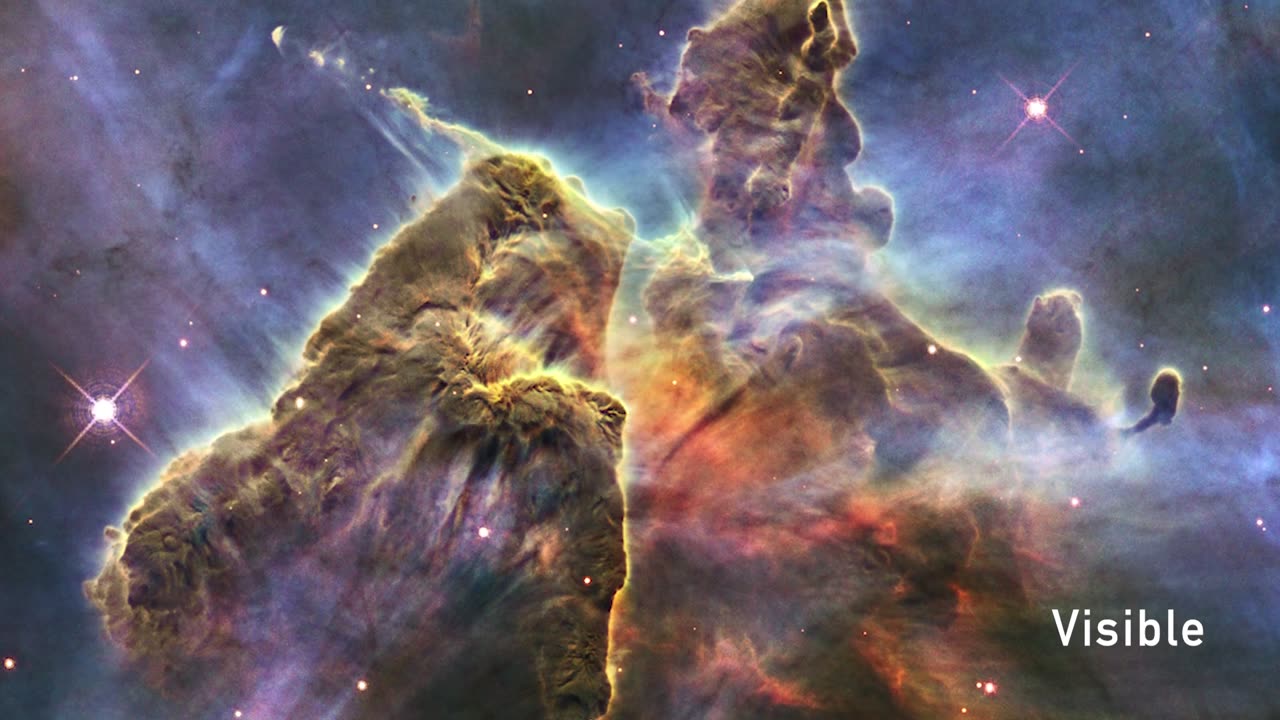Premium Only Content

Multiwavelength Astronomy: The Big Picture
Until the 20th century, astronomers learned virtually all they knew about sources in the sky from only the tiny fraction of electromagnetic radiation that is visible to the eye.
However, as astronomers have discovered how to collect radiation outside this part of the spectrum, they have been able to learn much more about the universe. Many objects reveal different aspects of their composition and behavior at different wavelengths. Other objects are completely invisible at one wavelength, yet are clearly visible at another.
In this video, Dr. Padi Boyd explains the exciting future of multiwavelength astronomy and how important Hubble is to exploring the mysteries of the universe.
For more information, visit https://nasa.gov/hubble.
Credit: NASA's Goddard Space Flight Center
Producer & Director: James Leigh
Editor: Lucy Lund
Director of Photography: James Ball
Additional Editing & Photography: Matthew Duncan
Executive Producers: James Leigh & Matthew Duncan
Production & Post: Origin Films
Video Credit:
Hubble Space Telescope Animation
Credit: M. Kornmesser (ESA/Hubble)
Electromagnetic Spectrum Graphic
Credit: NASA GSFC Conceptual Image Lab
James Webb Space Telescope Animation
Credit: NASA GSFC Conceptual Image Lab
Music Credit:
"Transcode" by Lee Groves [PRS], and Peter George Marett [PRS] via Universal Production Music
“Cosmic Call” by Immersive Music (Via Shutterstock Music)
-
![🔴[LIVE TRADING] Stock Market Crash News & Predictions || The MK Show](https://1a-1791.com/video/fwe2/34/s8/1/i/K/j/r/iKjry.0kob-small-The-MK-Show-Mar.-10th.jpg) LIVE
LIVE
Matt Kohrs
11 hours ago🔴[LIVE TRADING] Stock Market Crash News & Predictions || The MK Show
2,191 watching -
 LIVE
LIVE
BonginoReport
2 hours agoTulsi was Right: Christians Murdered in Syria (Ep.156) - 03/10/2025
13,688 watching -
 LIVE
LIVE
Dear America
10 hours agoIs Trump’s, JD Vance’s Life In DANGER? + Trudeau RESIGNS as Canada’s PM, Names Successor!
5,928 watching -
 LIVE
LIVE
Wendy Bell Radio
4 hours agoDemocrats Have Lost Their Minds
10,117 watching -
![CIA Documents Implicate The Soros’ As Ukraine War Criminals. Putin Agrees [EP 4467-8AM]](https://1a-1791.com/video/fwe1/b9/s8/1/g/A/g/r/gAgry.0kob-small-CIA-Documents-Implicate-The.jpg) LIVE
LIVE
The Pete Santilli Show
14 hours agoCIA Documents Implicate The Soros’ As Ukraine War Criminals. Putin Agrees [EP 4467-8AM]
2,130 watching -
 1:55:20
1:55:20
TheDozenPodcast
19 hours agoPrison Officer EXPOSES deaths in custody: Sam Samworth
6.85K2 -
 25:23
25:23
Fit'n Fire
20 hours ago $0.30 earnedThe Krink at Home Part 2 - PSA 300 Blackout Krink vs PSA 5.56 Krink
3.17K3 -
 1:01:29
1:01:29
PMG
17 hours ago $1.85 earnedTrump's Speech, SCOTUS Forces USAID Payments, and Justice For MRNA Vaccine Victims
9.88K5 -
 4:23:59
4:23:59
STARM1X16
14 hours agoSunday Night Duos
86.1K4 -
 1:02:11
1:02:11
The Dan Bongino Show
1 day agoSunday Special with Vince Coglianese, Rep. Tim Burchett, Rep. Byron Donalds & Vivek Ramaswamy
219K360